Light and ventilation, i.e. a brief history of skylights
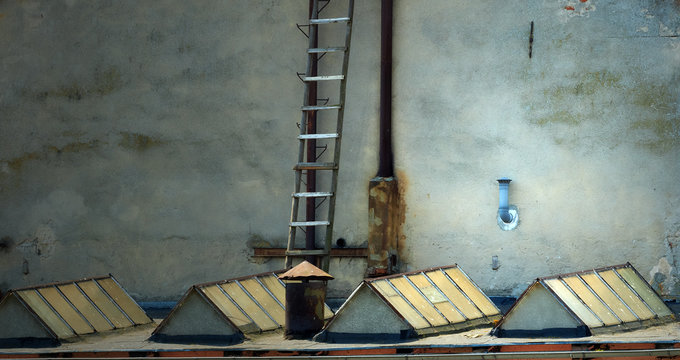
Allowing more light to penetrate through buildings by using openings in roofs — or skylights, as they are called nowadays — is by no means a new concept. They were first used in ancient Rome. The very first structure that used skylights was Pantheon — a cylindrical temple in the Campus Martius in Rome. The use of oculi similar to the one in Pantheon proved to be impractical in the rest of Europe due to adverse weather conditions. However, roof windows provided much desired light and ventilation which made them prevalent in the classical era.
Skylights and glass in architecture
It should be noted that glass production techniques were not universally known to people in the classical era. Admittedly, people would make glass objects, but the technology wasn’t advanced enough to enable glazing windows. The lack of glazing contributed to leaks and humidity in buildings. The Romans rose to the occasion and were the first to start using glass in architecture.
It wasn’t until late thirteenth century, however, that people understood how to install skylights in larger medieval structures. Due to difficulties involved in making big glass panes (the largest ones were 3 feet, or 90 cm, high), they were initially only used in larger structures, e.g. lighthouses, cathedrals and castles.
In 1674, an English glassmaker named George Ravenscroft developed lead glass. The addition of lead improved glass visual aspects and facilitated hot forming. In the Renaissance and Baroque eras, lighthouses were surrounded by built-in glazed windows.
And although skylights soon became a form of decoration, they still mostly served as a means to provide light. They had wooden frames that did not necessarily protect from rain or water ingress. The Cathedral of Saint Mary of the Flower (the Florence Cathedral) is a good example of a structure that incorporates elements of a Renaissance lighthouse and a dome.
Providing ventilation and light in the Industrial Age — everyday life and art
With the dawn of the Industrial Age in the eighteen century, producing larger glass panes became possible. Glass was made in sheets and was polished purely mechanically, which made it a lot more transparent than in the past. Additionally, windows quality considerably improved as sheet metal provided better sealing and protection against adverse weather conditions. Thus, skylights became more practical than ever before. They provided light to rooms that would otherwise be plunged in darkness without a kerosene lantern. The possibility of having daylight penetrate from above was used in stairwells of many famous buildings.
Interestingly, the trend also found its way to art, as it often reflects reality. Artists would depict heavens in ceilings or domes of churches as early as in the Baroque. Vaults were used as a way of emphasizing religious character of a given space by painting windows or roofs depicting heavenly creatures. A perfect example of such a trompe-l’œil painting can be found in the dome of the Jesuit Church in Vienna, by Andrei Pozzo.
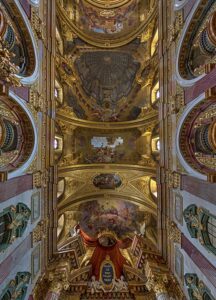
Photo 1. A trompe-l’œil painting in the dome of the Jesuit Church in Vienna, by Andrei Pozzo. Source: Wikipedia
In the nineteenth century, skylights could be found in Vincent van Gogh’s works, such as Thatched Cottages by a Hill. In the painting, they lighten up under-roof spaces.
Roof windows were not only used by artists as yet another theme, but served a much more practical purpose. And so Hans Christian Andersen would use daylight provided by skylights that resembled mansard windows when working on his fairy tales.
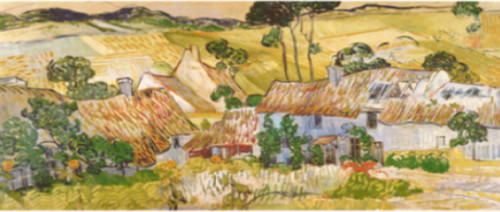
Image 1. Thatched Cottages by a Hill by Vincent van Gogh. Source: Wikipedia
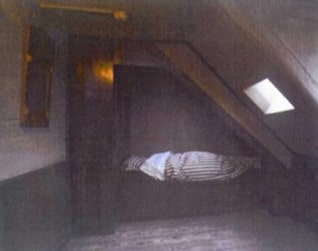
Photo 2. Hans Christian Andersen’s attic room. Source: Wikipedia
Skylights in industrial structures
Skylights were first used in industrial structures in the 70s and 80s of the twentieth century. There were made of steel and covered with wired glass. Skylights were triangular and did not provide enough light. Their large weight was a major drawback as they considerably increased roofs’ load. Skylights with glass coverings were very sensitive to damage and cracks, which often immediately resulted in leaks.
Modern industrial skylights, often referred to as vault skylights, have come a long way. They are now made of chamber aluminium profiles and other materials. The covering is usually made of chamber polycarbonate plates of different thickness. Finally, skylights are often equipped with all the necessary sealing systems and installation materials. Vault skylights are usually produced in the form of barrels. This way, they can accommodate ventilation and smoke dampers.
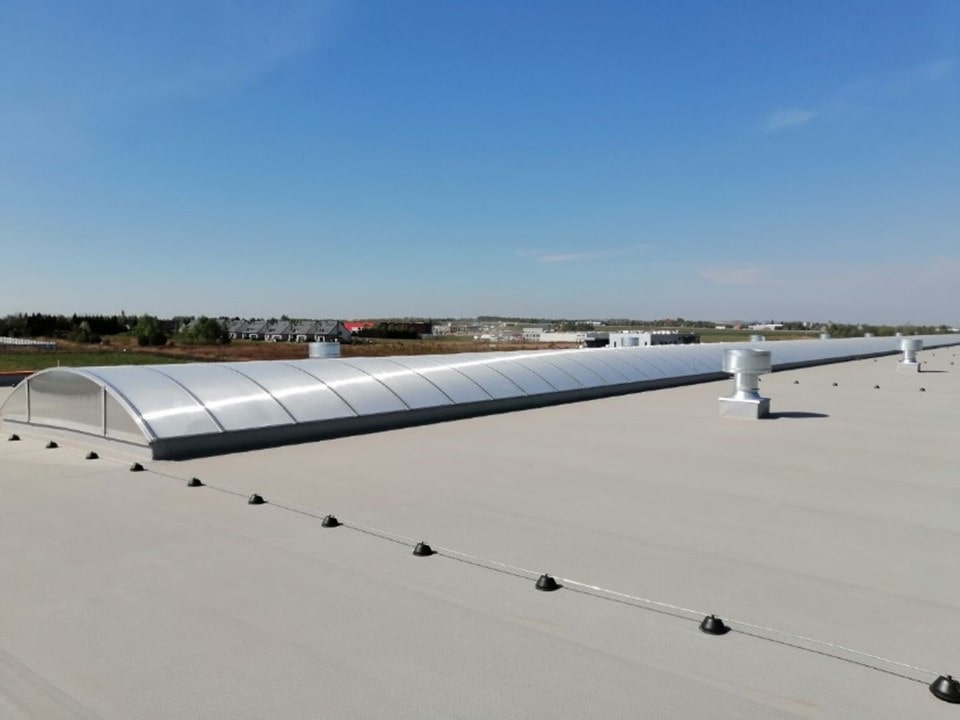
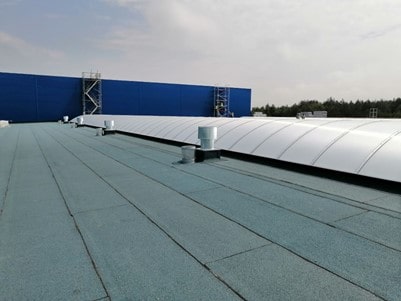
Photos 4 and 5. Modern vault skylights. Photo SMAY
Ventilation and roof access through skylights
This type of windows used in industrial settings does not only provide light, but also temporary ventilation. Additionally, they act as roof hatches, providing roof access for maintenance and supervision purposes. Vault skylights with roof hatches are found in public buildings, commercial buildings, production plants, warehouses, etc. They can be installed in various types of roofs with different slopes.
Linear skylights are an interesting and commonly used solution. Their main purpose is providing daylight to such large structures as production and storage facilities. Due to optional dampers opened by an actuator, they also provide natural room ventilation and gravitational smoke extraction during fire. Vault skylights are used in public buildings, commercial buildings, production plants, warehouses, etc.
SMAY provides a full range of skylight solutions. Our offer includes skylights, spot skylights, roof hatches, smoke dampers, complete smoke extraction systems for aisled structures, as well as smoke exhaust concepts and designs.
Autor

Maciej Fiecek
Sales Director of Smoke and Roof Lighting Systems
SRD single skylights
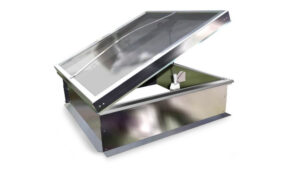
The SRD single skylights are used in public buildings, warehouses, production facilities, etc. They are designed for mounting onto flat roofs with a slope below 25°. The main function of the SRD single skylights is sunlight illumination of rooms. The skylight covers may be made as fixed or openable pivoting ones. In this second version they additionally perform the function of periodic aeration. The openable skylights should be closed when the wind speed is higher than 10 m/s.



